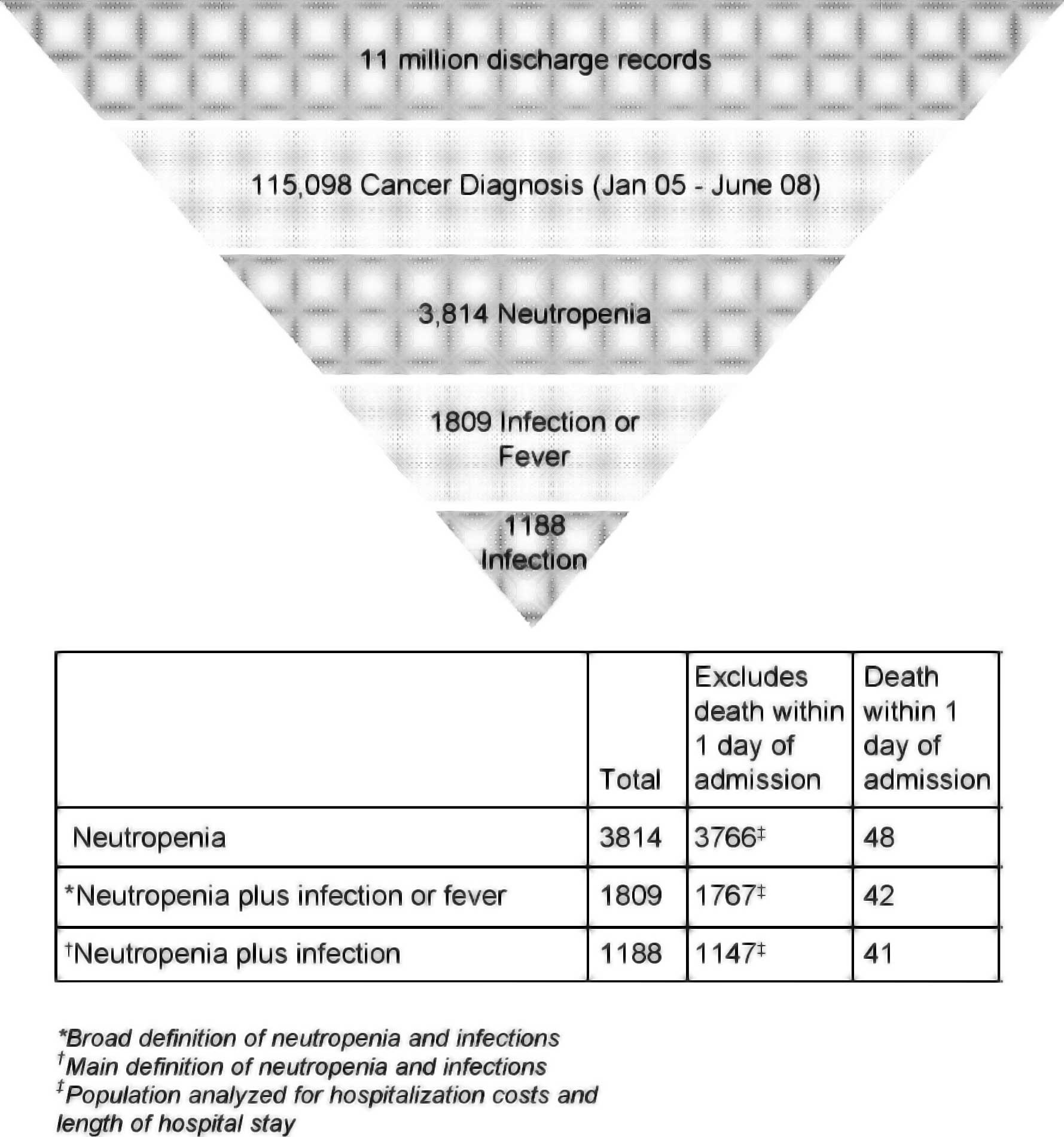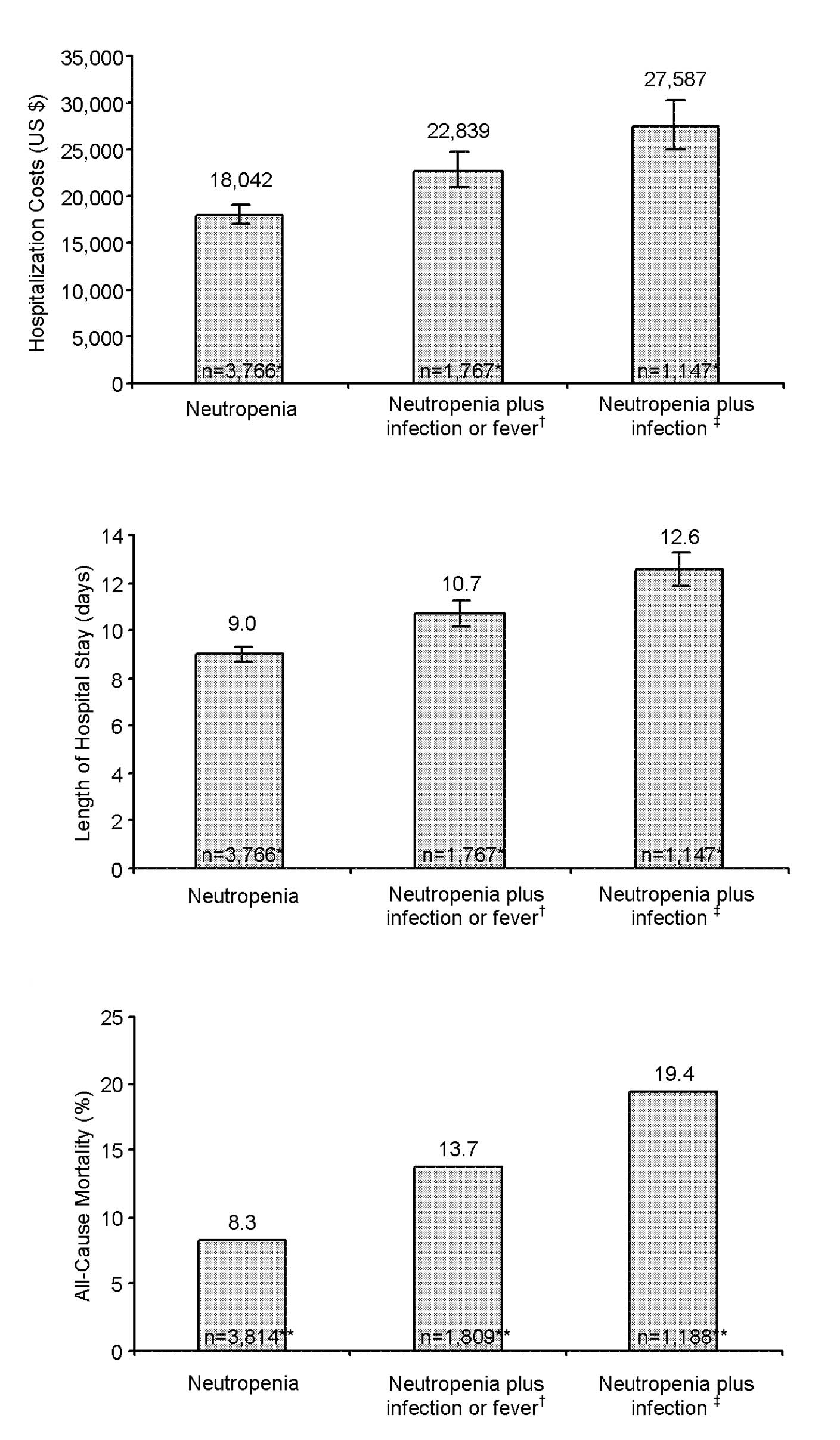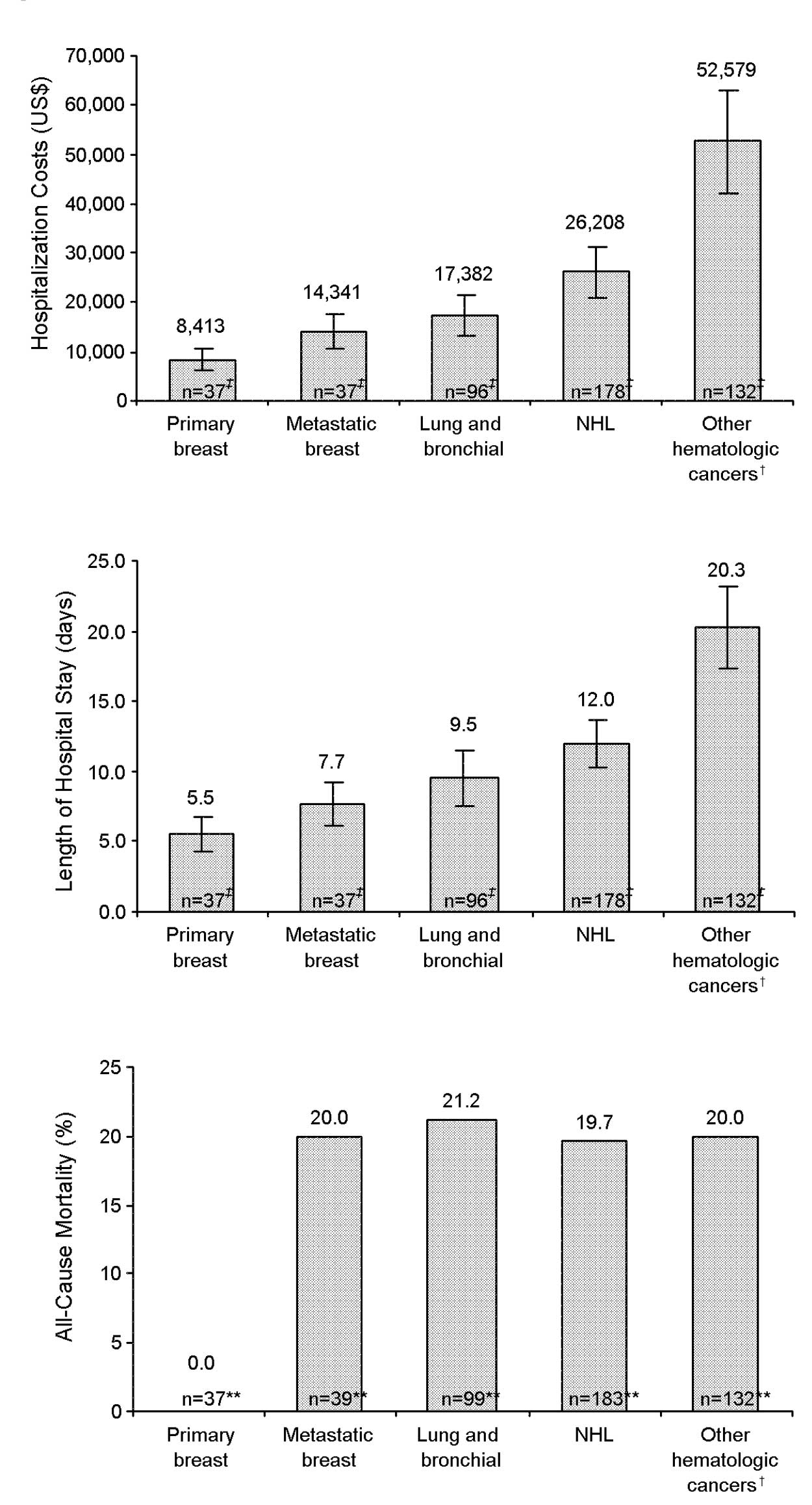Costs and outcomes associated with hospitalized cancer patients with neutropenic complications: A retrospective study
- Authors:
- Published online on: June 30, 2011 https://doi.org/10.3892/etm.2011.312
- Pages: 859-866
Metrics:
Total
Views: 0 (Spandidos Publications: | PMC Statistics:
)
Total PDF Downloads: 0 (Spandidos Publications: | PMC Statistics:
)
Abstract
The average total hospitalization costs for adult cancer patients with neutropenic complications were quantified and the average length of hospital stay (LOS), all-cause mortality during hospitalization and reimbursement rates were determined. This observational retrospective cohort study identified adult patients with cancer who were hospitalized from January 2005 through June 2008 using a large private US health care database (>342 inpatient facilities). ICD-9-CM diagnosis codes identified patients by cancer type and who had neutropenic complications. The utilization and accounting systems of the hospitals were used to calculate mean (±95% confidence interval) hospitalization costs and LOS and percent all-cause mortality and reimbursement. Costs were adjusted to 2009 US dollars. There were 3,814 patients who had cancer and neutropenia, 1,809 (47.4%) also had an infection or fever and 1,188 (31.1%) had infection. Mean hospitalization costs were $18,042 (95% CI 16,997-19,087) for patients with neutropenia, $22,839 (95% CI 21,006-24,672) for patients with neutropenia plus infection or fever and $27,587 (95% CI 24,927-30,247) for patients with neutropenia plus infection. Mean LOS were 9 days (95% CI 8.7-9.3), 10.7 days (95% CI 10.2-11.2) and 12.6 days (95% CI 11.9-13.3), respectively. Mortality followed a similar trend; 8.3, 13.7 and 19.4%, respectively. By cancer type, hematologic malignancies had the highest average hospitalization costs and longest mean LOS of $52,579 (95% CI 42,183-62,975) and 20.3 days (95% CI 17.4-23.2), and a high mortality rate of 20.0%, while primary breast cancer patients had the lowest cost of $8,413 (95% CI 6,103-10,723), shortest LOS of 5.5 days (95% CI 4.2-6.8) and lowest mortality (0%). Mean reimbursement rates were 100.0, 101.5 and 95.4% for patients with neutropenia, neutropenia plus infection or fever and neutropenia plus infection, respectively. Hospitalized cancer patients with neutropenic complications had a higher all-cause mortality rate and higher inpatient hospitalization costs than those previously published. Results from this study suggest that costs for inpatient hospitalized cancer patients with neutropenic complications are principally reimbursed by payers.













